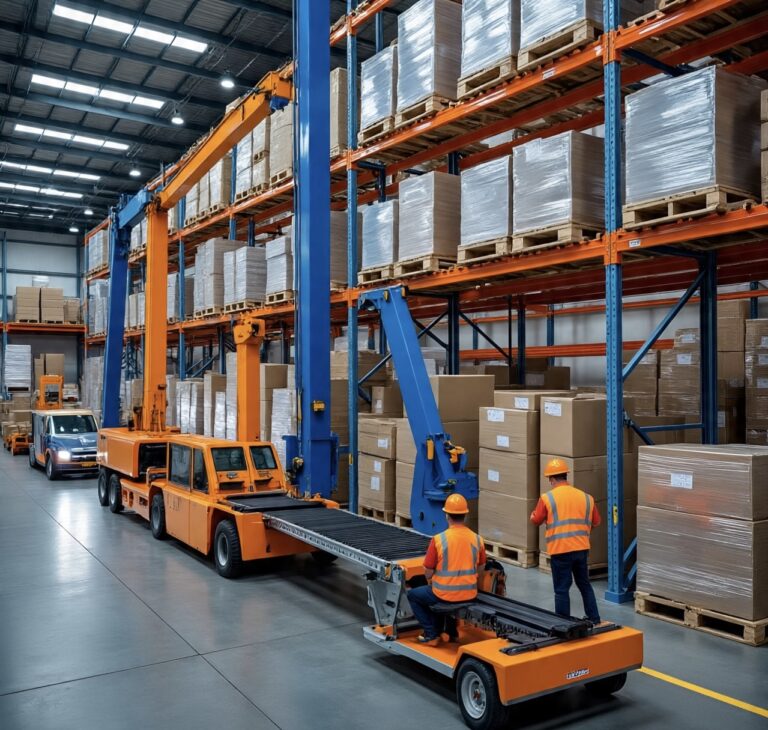Essential Guide to Stocking Critical Parts and Safety Gear
Reduce costly downtime and improve worker safety with our guide. Learn 5 essential tips for stocking critical parts and safety gear to build a proactive plan.
Unplanned maintenance stops and safety incidents can grind operations to a halt and drain budgets in a single shift. A recent Plant Engineering survey found that 37 percent of facilities still struggle with parts availability when critical assets fail.
According to the Bureau of Labor Statistics, private industry employers reported 2.6 million nonfatal workplace injuries in 2021, highlighting the significant cost of safety lapses.
Proactively stocking the right spare parts and safety gear is one of the simplest ways to cut downtime and protect workers. This guide shows you what to keep on the shelf and how to manage it. Learn where modern CMMS or EAM tools fit in so you can build a practical stocking plan today.
Why Proactive Stocking Matters
A strategic inventory is not just about having parts on hand; it is a foundational element of a resilient and efficient operation. It directly impacts safety, asset health, and the bottom line. A stocked storeroom keeps critical replacement parts and personal protective equipment (PPE) within arm’s reach, reducing mean time to repair (MTTR) and preventing risky workarounds.
Timely component changes reduce wear, maintain lubrication integrity, and help heavy equipment achieve its design life. ARC Advisory Group research shows that every hour of unplanned downtime costs manufacturers an average of $260,000. Holding an on-hand inventory can slash those events significantly, improving overall productivity.
Consider the true cost comparison. An emergency rush order for a specialized hydraulic seal kit can cost three to five times more than a stocked kit. When you factor in overtime labor and missed production, the gap widens further. A structured list and data-driven reorder points can address common roadblocks like budget limits and limited warehouse space.
|
Key Insight: The cost of one hour of unplanned downtime can dwarf the value of a year’s worth of critical spares. Proactive stocking isn’t an expense; it’s a high-return investment. |
What to Stock: The Essential Checklist
To streamline ordering and avoid duplicate SKUs, items are grouped into four essential categories. These include Parts & Tools, Safety Gear, Emergency & Compliance Items, and Digital Systems. This approach creates a clear framework for building a comprehensive inventory.
Parts and Tools
This category forms the backbone of your maintenance response capability, starting with critical replacement parts for high-risk assets.
You should also stock essential lubrication tools, industrial cleaning equipment, and diagnostic tools like infrared cameras. Finally, ensure you have calibration equipment such as torque wrenches and pressure gauges to maintain accuracy.
For heavy equipment, items like bucket pins and bushings for loader arms are crucial. Professionals running Case backhoes, for example, often keep complete seal kits on site. Access to durable Case backhoe parts from HW Part Store can turn a multi-day breakdown into a single-shift repair.
|
Pro Tip: Don’t compromise on quality for critical components. Sourcing reliable, OEM-spec parts from a trusted vendor ensures your stocked inventory will perform under pressure, preventing a simple repair from becoming a repeat failure. |
Safety Gear
Protecting your team is paramount, and a well-stocked safety cabinet ensures compliance and prevents injuries. This begins with PPE basics like ANSI-rated hard hats, impact-resistant gloves, safety glasses, and hearing protection. Depending on your operations, you may also need specialty PPE like chemical-resistant suits or arc-flash clothing.
A complete inventory must also include fall-protection systems, including harnesses, lanyards, and certified anchor points for work above four feet. Additionally, a comprehensive Lockout/Tagout kit with hasps, padlocks, and danger tags supports OSHA-compliant energy isolation practices during maintenance.
Emergency and Compliance Items
These items are critical for responding to incidents and satisfying regulatory requirements. Key supplies include compliant fire extinguishers, first-aid kits meeting ANSI/ISEA standards, and eye-wash stations in hazardous areas. You should also stock spill-containment kits with absorbent socks and neutralizing agents.
Physical barriers like safety guards, floor striping, and reflective signage are essential for controlling traffic and highlighting hazards. For air quality, ventilation carts and continuous monitors are necessary. Having portable units like PK Safety’s reliable multi-gas monitors on hand allows teams to verify confined-space safety within seconds and log readings for compliance reviews.
Digital Systems and Knowledge Assets
Physical inventory is only part of the solution; digital tools and information are equally vital. A computerized maintenance management system (CMMS) or enterprise asset management (EAM) platform is essential for tracking inventory and forecasting usage. This software should include an asset hierarchy, parts catalog, and work order management.
Training materials also play a crucial role. Standard operating procedures, short video tutorials, and quick-reference cards can accelerate onboarding and reduce human error. Finally, create a cloud library of OEM manuals, calibration certificates, and SDS sheets so technicians can access them on a tablet in the field.
How to Manage Your Stock Effectively
Stocking parts is one thing; managing them efficiently is another. A systematic approach ensures that your inventory investment pays dividends. Start by setting criticality rankings and reorder points in your CMMS, using data on usage and supplier lead time to automate the process.
Instead of relying on a single annual inventory, implement weekly or monthly cycle counts to catch variances early. Use your CMMS for smart inventory management with automated alerts and barcode scanners to reduce errors. You can also negotiate consigned inventories with vendors to lower your tied-up capital without risking availability.
Optimize your physical space with vertical lift modules, clear bin labels, and color-coded zones to shorten search times. To ensure alignment, create a cross-functional stocking team with members from maintenance, safety, procurement, and finance. This collaboration provides unique insights into risk, budget, and compliance needs.
|
Key Insight: Effective stock management relies on a trinity of elements: accurate data in your CMMS, disciplined processes like cycle counting, and cross-functional team collaboration to align maintenance needs with overall business goals. |
FAQs
What is preventive maintenance?
Preventive maintenance is a scheduled inspection, adjustment, and replacement activity performed on equipment before a failure occurs. This proactive approach reduces the likelihood of an asset breaking down unexpectedly.
What are the four main types of preventive maintenance?
The primary types are time-based, usage-based, predictive, and prescriptive maintenance. Each one uses different triggers to schedule maintenance tasks and optimize asset health.
What are examples of preventive equipment?
Common examples include consumable parts that wear out over time, such as oil filters, air filters, and bearings. Other items like hydraulic seals, safety clasps, and gas detector sensors also fall into this category.
How do I create a preventive maintenance schedule?
Start by identifying critical assets and checking OEM guidelines for recommended service intervals. Then, define task schedules in your CMMS, assign responsibilities to your team, and track completion metrics to ensure compliance.
Preventive vs. predictive maintenance: what’s the difference?
Preventive maintenance relies on fixed intervals based on time or usage. In contrast, predictive maintenance draws on real-time condition data from sensors and monitoring tools to signal that maintenance is needed only when required.
Your Next Steps
Transforming your stocking strategy from reactive to proactive can begin today. Start by downloading a quick-start checklist and walking your team through the storeroom to identify immediate gaps. Next, run a criticality analysis in your CMMS or EAM to prioritize your most important assets.
Schedule hands-on training for your team covering PPE fit, lockout/tagout procedures, and confined-space gas testing. It is also important to benchmark your current policies against industry standards like OSHA 1910 and ISO 55001. Taking these concrete steps will build momentum for your program.
|
Pro Tip: Don’t let analysis paralysis stall progress. Your first step, a simple storeroom walk-through and gap analysis, can provide the momentum needed to build a fully proactive stocking program. |
Final Thoughts
Stocking critical parts and safety equipment is not simply about filling shelves. It is a strategic move that cuts downtime, safeguards employees, and delivers a measurable return on investment.
By following this checklist, using CMMS capabilities for forecasting, and partnering with reliable suppliers, you can shift from reactive firefighting to proactive excellence.






